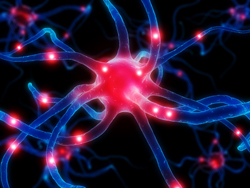Networking for the central nervous system
The ‘Axonal regeneration, plasticity & stem cells’ (Axregen) project has been pushing research into conditions associated with the central nervous system when axons are damaged, such as multiple sclerosis or through trauma. Axons are the primary transmission lines of the body's nervous system. Involving 10 academic and 2 commercial organisations from various European countries, the 4-year programme is providing high quality theoretical and technical training to 20 PhD and 2 post-doctoral fellows based on the complementary expertise of the collaborating partners. The training plan, which began in September 2008, aims to expose these young researchers to different research environments. Four workshops were held in the first 24 months of the programme, and more are planned. Areas of research include the molecular biology of gene expression during axonal damage and regeneration, artificial systems for growing and studying axons, advanced imaging techniques for assessing axonal integrity and the use of stem cells. Researchers are also interested in pharmacological approaches to prevent or restore axonal damage, and surgical and experimental methods to study axonal structure, function and recovery. A project priority is to promote greater exchange and collaboration between academic and industrial teams working in the field. The training aims to create a community of open-minded young scientists and develop a network for future collaboration throughout their careers. With the involvement of its two industrial partners, the consortium is also emphasising the commercial exploitation and development of potential new therapies.




